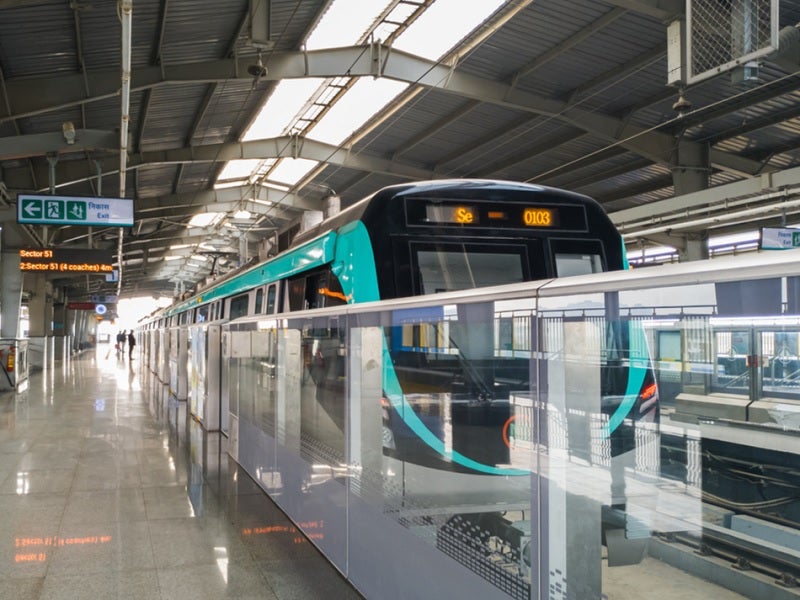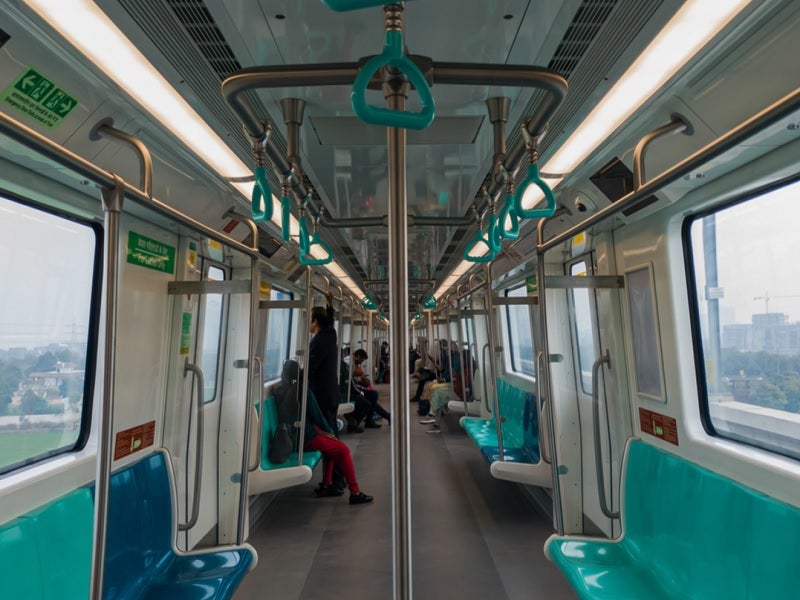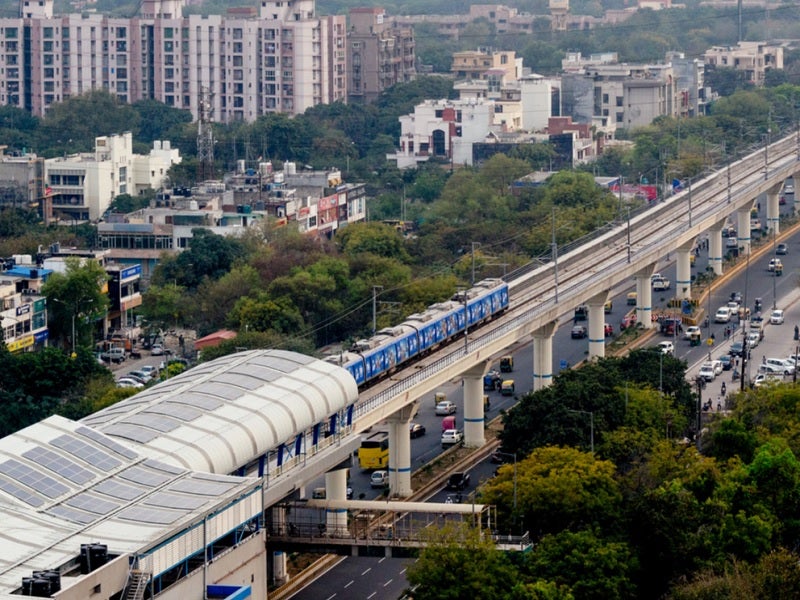Noida Metro, also known as Aqua Line, is a mass rapid transportation system developed by Noida Metro Rail Corporation (NMRC) with a cost of Rs55.03bn ($765m) to link Noida and Greater Noida cities in Uttar Pradesh, India.
Located 20km away from Delhi, Noida is served by Noida-Greater Noida Expressway and highways connecting Delhi and its surrounding towns. The industrial city is home to a population of more than one million. Increasing dependence on public and private transportation has led to the proposal to develop a mass rapid transport system.
The project was financed by the Government of India and the State Government of Uttar Pradesh. Both governments contributed 20% each while the remaining 60% was sourced through external loans.
The Government of Uttar Pradesh approved the construction of Noida Metro and selected Delhi Metro Rail Corporation (DMRC) as the turnkey consultant for the project in October 2014.
Construction on the metro rail project began in mid-2015 and was completed by the end of 2017 while trial runs commenced in July 2018.
The 29.7km-long Noida-Greater Noida metro corridor was opened for commercial services in January 2019.
Noida Metro route and stations
The Aqua Line corridor originates at Noida Sector-51 in Noida and terminates at Delta Depot station in Greater Noida.
It is an elevated alignment with 21 stations, including elevated and at-grade stations, of which 15 stations are located in Noida and the remaining six in Greater Noida. The Aqua Line is connected to the Blue Line of the Delhi Metro by a skywalk.
Knowledge Park-1 station and Delta-1 station in Greater Noida have provisions for future expansion. Platforms at all the stations feature screen doors, which open in synchronisation with the train doors.
Each station is connected to residential areas, industrial locations and other locations by pathways, pedestal ways, and bridges. Parking facilities are available at each station.
More than 101 lifts and 81 escalators were installed at stations across the network for quick access and easy mobilisation of the passengers.
Fast trains for Noida Metro
NMRC introduced fast trains to minimise the journey time of Aqua Line commuters in February 2021. The fast trains skip ten of the Aqua Line’s 21 stations during the peak hours, reducing the travel time by nine minutes for the Aqua Line commuters.
The average travel time between Sector 51 in Noida and Depot Station in Greater Noida is 45 minutes and 43 seconds while the fast trains reduce the journey time to 36 minutes and 40 seconds for Aqua Line commuters.
The travel time between Sector 51 (which has the highest ridership) and Pari Chowk (which has the second highest ridership) has been reduced to 28 minutes 30 seconds.
The stations that are skipped by the fast trains are Sector 50, Sector 101, Sector 81, Sector 83, Sector 143, Sector 144, Sector 145, Sector 146, Sector 147 and Sector 148 metro stations.
Infrastructure
An eco-friendly, zero-discharge depot constructed on 25ha of land features roof-top solar panels and water recycling facilities. It offers facilities for the accommodation and maintenance of the train sets.
Two receiving substations were commissioned to support the power requirements of the rolling stock and stations. Additionally, 21 auxiliary substations were commissioned in all the 21 stations along the metro line. The trains are powered by 25kV AC overhead catenary system with cab signalling and continuous automatic train control with automatic train protection (ATP).
Noida Metro is equipped with communications-based train control (CBTC) signalling system supplied by Hitachi.
Rolling stock of Noida Metro
Noida Metro runs a fleet of 19 lightweight trains provided by CRRC Nanjing Puzhen. Each train comprises two motor train units and two trailers’ units and can accommodate 1,034 passengers.
The stainless-steel train sets are approximately 23m-long and 2.9m-wide. Each cab of the train features double doors and has an axle load capacity of 16t. The trains are designed to run at a scheduled speed of 35km/h and a maximum speed of 95km/h.
Noida Metro phase two details
The second phase of the Aqua Line, linking Noida Sector 51 to Knowledge Park 5 in Greater Noida was approved by the Greater Noida Industrial Development Authority in December 2018 to connect the Metro deeper into Noida and the adjacent Greater Noida region.
The 14.95km-long elevated phase two extension with nine additional stations will be developed with an estimated investment of Rs26.02bn ($366.8m). Scheduled to be commissioned in 2022, the 9.15km long first section of the line, connecting Sector 51 to Sector 2, will have five metro stations. The 5.8km long final section of the second phase will have four metro stations.
Future routes include Sector 142 to Botanical Garden corridor (11.504km with eleven stations), and Depot Station to Boraki corridor (3km with three stations).





